The Lincoln Center Learning & Innovative Technology Environment, located on the fourth floor of Lowenstein in room 416, was operating at full tilt as of last Thursday. A miniature, plastic model of the Eiffel Tower was coming to life in the belly of a 3D printer. Students with virtual reality goggles practiced hurling imaginary objects across a giant flat-screen. And inside the brand-new video/podcasting studio, a pair of LITE’s work-study students demonstrated how to record a video while jotting notes on a screen, weatherman-style.
“People say when they walk into the space, they feel more creative—that LITE lets them think outside the box and be able to apply these technologies in their classes,” said Nicole Zeidan, Ed.D., assistant director of emerging educational technologies and learning space design. She helps connect LITE’s resources to students and faculty, such as Assistant Professor of Art History Nushelle de Silva, Ph.D.
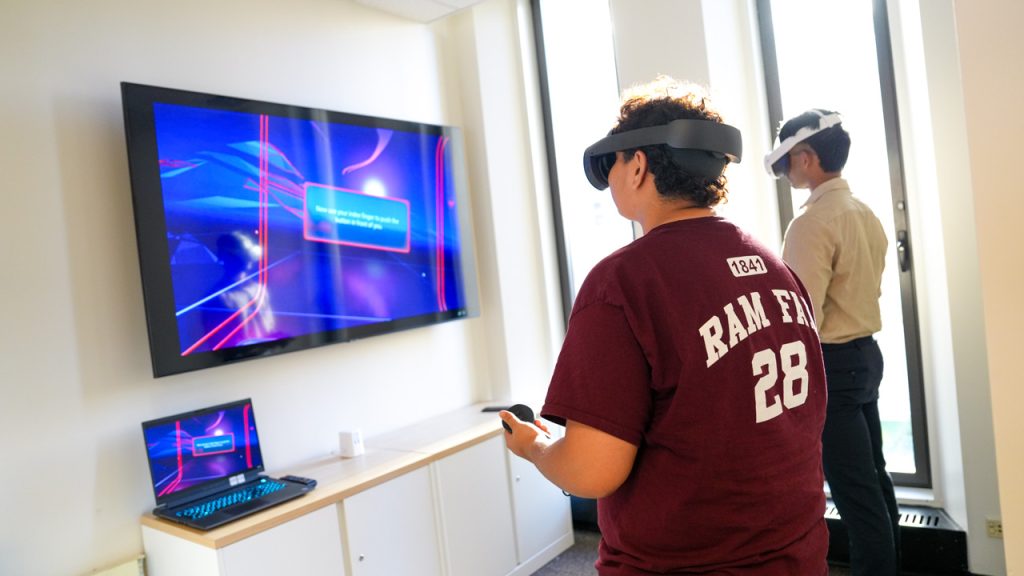
first-year student Elliot Ismail
Virtual Reality for Museum Studies
Earlier this fall, de Silva wanted her Museum Architecture students to see how a museum experience changes when you “visit” it virtually. Using VR headsets at Rose HIll’s LITE, students were able to view the “Mona Lisa” up close without the hordes of tourists in the Louvre.
With this technology now available at Lincoln Center, said de Silva, “ I could turn this into homework. And then we would have the whole of the class time to talk about that experience.”
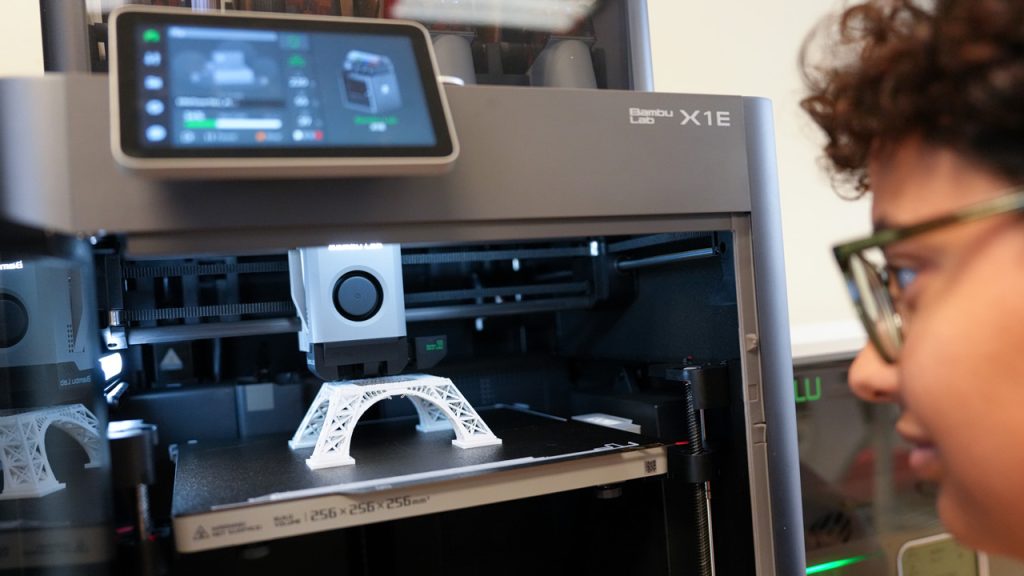
Printing Sturdy Replicas of Fragile Artifacts
The tools at the LITE Center in Lowenstein and its counterpart at Rose Hill are designed to make classes experiential and creative work more accessible. Students can fashion theater costumes with LITE’s sewing machines or repair objects with its soldering equipment. A too-fragile-to-touch artifact can be 3D scanned, then 3D printed to create a durable facsimile, like the medieval seals the LITE Center recreated for Center for Medieval Studies Director Nicholas Paul. “The originals … are made out of wax and, obviously, extremely old, so having copies that we can pass around and look at closely is really useful in classes,” he said.
Fleur Eshghi, Ed.D., associate vice president of educational technology research computing, said she thinks many academic departments will make good use of the center.
“We have been looking for space for Lincoln Center to build the same facilities [as Rose Hill],” she said. “And we have finally succeeded … I’m extremely excited.”
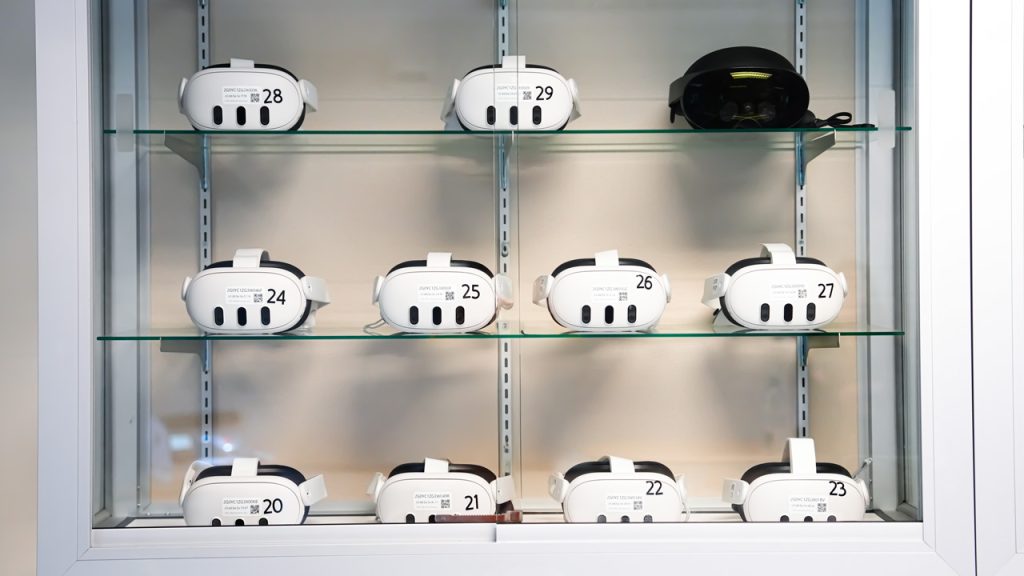
Letting the Light in
Nicola Terzulli, learning space design lead for the Office of Technology, made the most of Lincoln Center’s light-filled space when designing the different stations.
“Lowenstein has those iconic windows for each floor,” said Terzulli, so he found a manufacturer who could soundproof a podcasting room but keep the glass walls. When the studio is not in use, you can see through it. But should you need privacy—or want to use the room to record a media-rich lesson for Panopto, Fordham’s platform for video classes—you just draw the room’s thick black curtains to enclose it.
Terzulli even used all-glass cabinets to make the tools at Lincoln Center’s LITE easy to see.
“We wanted as much glass as possible … so people when they walk in, they see [these tools]and they’re like, ‘Hey, what’s that? Can I do that? Can I use that?’”
For details on the features and hours of the Lincoln Center and the Rose Hill LITE Centers, visit their site.
LITE, which stands for Learning & Innovative Technology Environment, offers an array of cutting-edge educational technologies. It reflects a national trend toward learning commons, said Fleur Eshghi, Ed.D., associate vice president of educational technology research computing. Learning commons are shared collaborative spaces, usually located in libraries, where students, faculty, and staff can meet to brainstorm, socialize, research, and strategize, said Eshghi.
“Learning commons can include the use of traditional materials, like books, but if you need to go somewhere to produce materials or use the latest technology together with your colleagues, this is the place,” said Eshghi.
As a collaboration between The Office of Information Technology and Fordham Libraries, Eshghi said the space is for everyone, but particularly for faculty and students. The center provides both low-tech technologies (a sewing machine) and state-of-the-art computer tech (virtual and augmented reality). Unlike other areas of the library, talking is permitted—even encouraged. There are small lounge areas for breakout sessions. Several tall tables with stools sit beside whiteboards, encouraging small-group brainstorming. There are banks of computer stations where the computers can fold under the table and turn the surface into a conference table.
LITE Features:
- IT Service Desk. An integrated technology support center and information desk with day-to-day IT support from IT professionals and academic peers
- A maker space facility for production with 3D printers, a laser cutter, a large format printer, and a handheld 3D scanner
- Two sound-suppressed recording and podcasting rooms with microphones and green screens
- Several collaborative work areas
- Fordham’s Laptop Loaner program, which lends out laptops, webcams, microphones, and more
- High-end computer workstations for multimedia production, programming, and coding
- An XR lab area for virtual and augmented realities
- A 360 camera
- Assistive technology workstation
- Two Air acoustic pod rooms. Multi-use rooms used for collaborating, recordings, or video conferencing
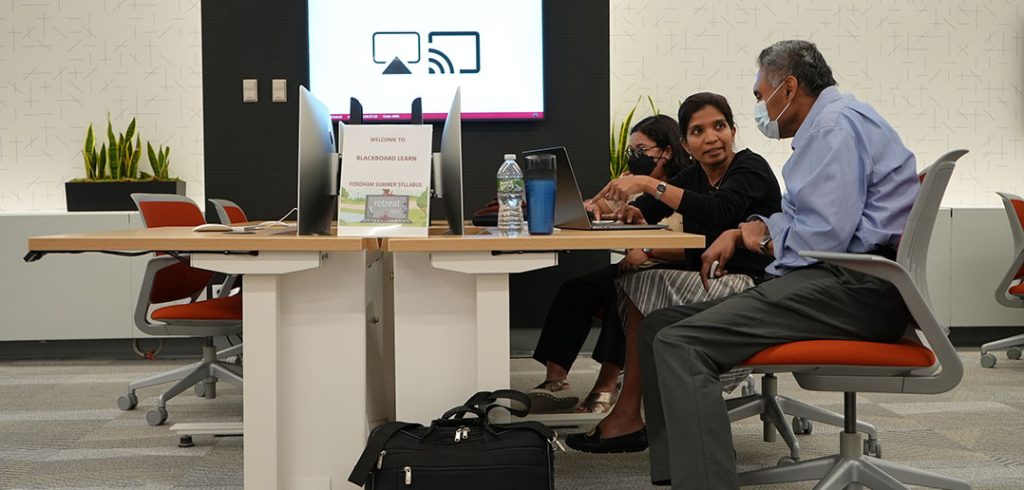 And if there is a snag in using the equipment, not to worry. LITE has a full-time IT staffer on hand in case something goes wrong with the tech.
And if there is a snag in using the equipment, not to worry. LITE has a full-time IT staffer on hand in case something goes wrong with the tech.
“We believe nothing kills the spirit of creativity and momentum than when you have a technical issue and you don’t know where to go, or you have to put everything away and go to another building to get help,” said Eshghi.
In imagining the center, Eshghi surveyed the Fordham community about their needs.
“I interviewed practically every department at the University to see what is it that they see in the future,” said Eshghi. “We have to go hand in hand with the academic departments; we’re an extension to what is going on in the classes and in their labs.”
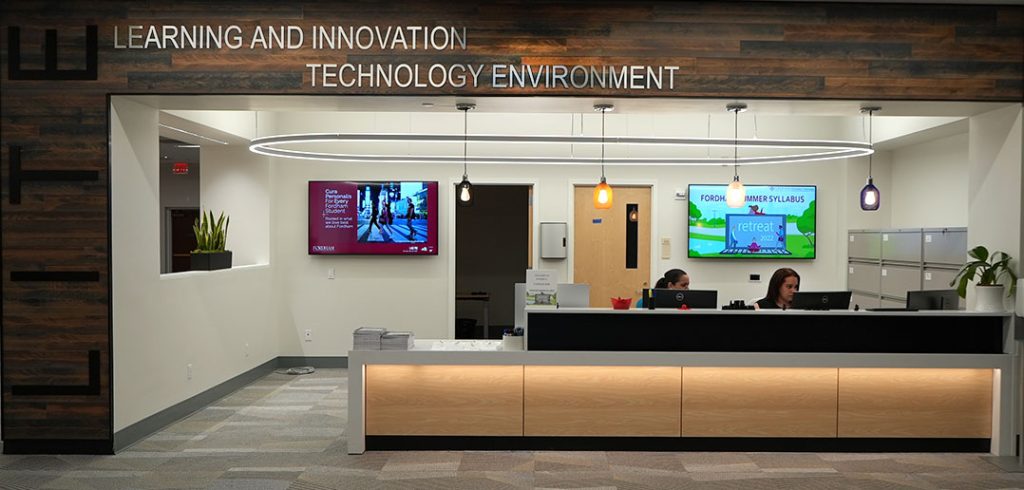
Mix and Match Tech
Nicola Terzulli, the lead in learning space design for the center, said that while each piece of technology can be used on its own, much of it could be combined.
Terzulli noted that not only can a professor combine 360-degree camera and the VR, as in the case of Chartres, but artifacts from the site could also be scanned on the 3-D scanner and then printed out on the 3-D printer. Later, a podcast could also be made about a site.
“Everything can be mixed and matched to the medium,” said Terzulli.
For example, he noted that the anthropology department could use a 3-D scanner to scan a delicate fossil, or even a human skull, and the 3-D printer could then print it out so that students can handle the object without fear of damaging it.
For some professors, there will be a bit of a learning curve when using the technology, whereas for students it may be less so. For example, students who are into gaming may find that using the controls to the VR comes naturally. On a recent visit, LITE tech assistant Jackson Saunders, a sophomore at Fordham College at Rose Hill, assisted Curator of University Art Jennifer Udell, Ph.D., in locating an obscure archeological site in Greece. Udell said that she could definitely see assigning students to virtually visit various sites around the ancient world.
“Then they can teach me,” she said.
For questions about the LITE center, to collaborate, or schedule a tour, please contact the LITE director, Nicole Zeidan, Ed.D., or their staff at [email protected]. For a virtual tour, visit fordham.edu/lite.
]]>